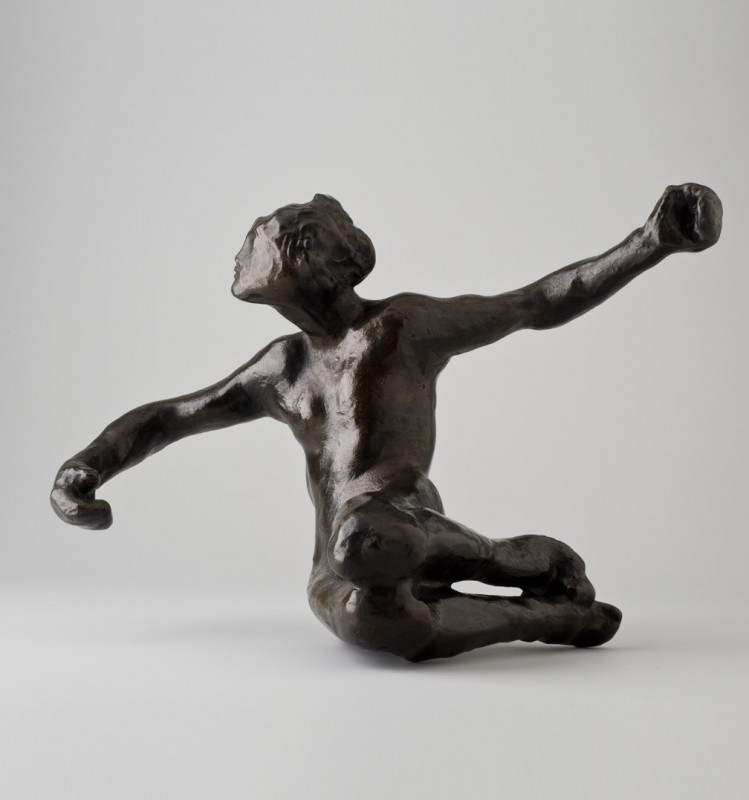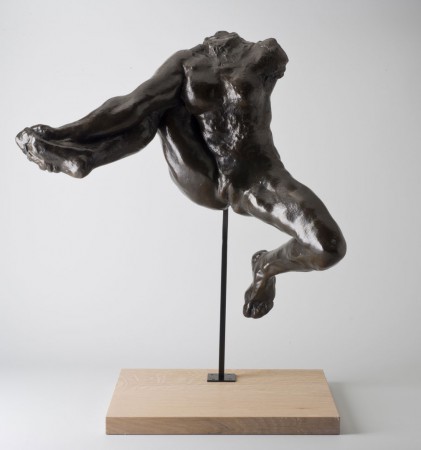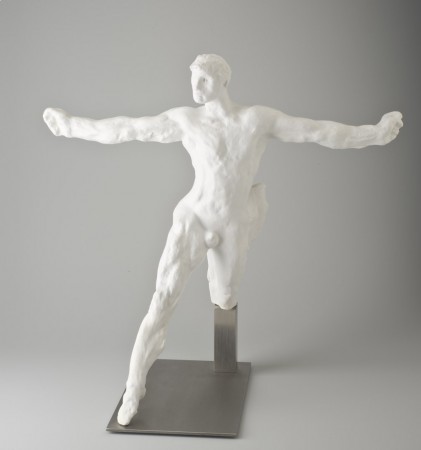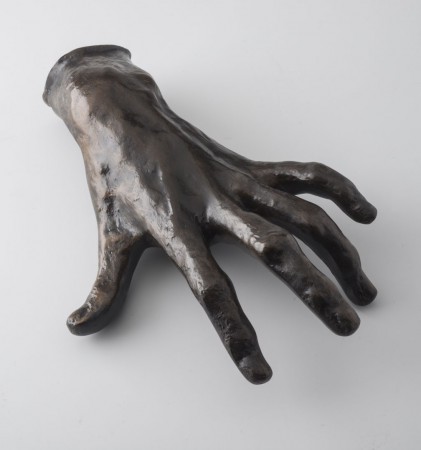

Auguste Rodin (1840-1917)
Rodin's works, especially The Gates of Hell, inspired by Dante's Divine Comedy, include a throng of damned figures: Grief-Stricken Damned Woman, Thunderstruck Damned Woman, a group of two Damned Women... Originally designed for The Gates of Hell, these figures would subsequently lead independent lives after being reproduced or cast separately.
The figure of the Damned Woman shown here, with a sketchily modelled face similar to that of the Sphinx, seems to be twisting her upper body around. This highly Michelangelesque sculpture, sometimes called The Wave, is a variant of the male nude known as The Poet.
Rodin decided to exclude the female figure from the infernal regions of The Gates and instead used her in several assemblages. She appeared, in turn, placed vertically, almost in limbo (The Prophetess), in the form of a sea creature (Triton and Nereid) and even equipped with wings, hovering above a composition based on scaled-down models of heads and hands from The Burghers of Calais.
Exploring every direction, Rodin experimented very freely with this small figure, which he placed in the most unexpected positions. These works, which remained in the sculptor's studio until his death, today appear as precursory signs of his modernity.
Each reproduction requires great expertise and draws on the skills of the Rodin Museum's teams and craftsmen. It is from the official moulds from the museum's collections that the most accurate resin reproductions are made. They are then hand-patinated to give it the appearance of bronze, plaster or marble.
Finally, they are validated and checked by the Musée Rodin’s curators to ensure that they comply with moral rights.
Reproductions come with an explanatory note about the history of the work.
The seal and the mention “Reproduction - Musée Rodin” guarantee the quality and origin of the sculpture reproduction.













